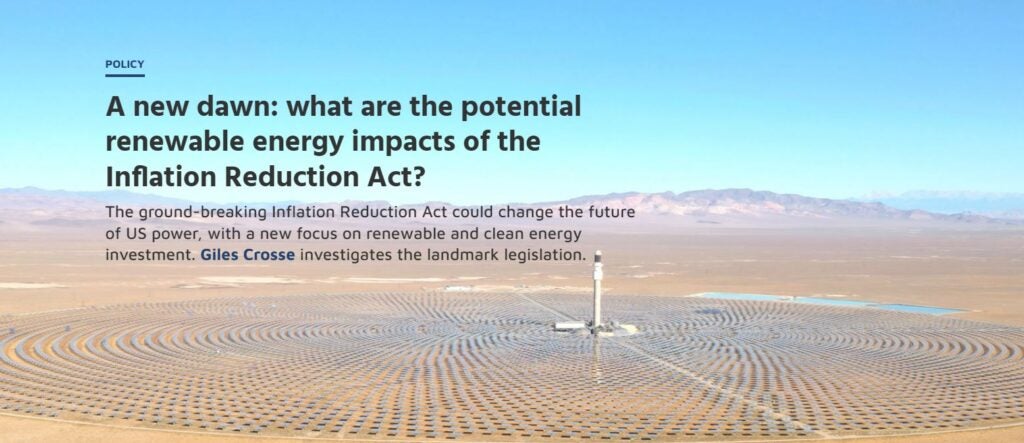
[ad_1]

How could the biggest piece of federal legislation in a generation affect the power industry? While the bill primarily aims to curb spiralling inflation, the passing of the Inflation Reduction Act into law has committed the US government to spend almost $400bn on energy and climate change across the country, a staggering investment that could make or break the world’s climate commitments.
In theory, the bill could deliver on these ambitious goals. Investments in clean power outlined in the bill could reduce the US’s greenhouses gases to just 40% of 2005 levels by 2030, a significant step towards decarbonising swathes of the US economy. However, perhaps predictably, challenges remain. Delivering this scale of renewable power will require a vast increase in new minerals and metals, the extraction and processing of which could threaten the very idea of a renewable-driven industry.
Elsewhere, we asses the uses and potential of a number of energy sources, from ocean power and biomass to gravity batteries and nuclear. We also speak with the African Energy Chamber about the future of energy on the continent, and ask how digital twins could be the spearhead of new technological innovation in the power industry.
Whether you are on a desktop, tablet, or smartphone, you can read the magazine for free online, and join the conversation on Twitter.
In this issue
A new dawn: what are the potential renewable energy impacts of the Inflation Reduction Act?
The ground-breaking Inflation Reduction Act could change the future of US power, with a new focus on renewable and clean energy investment. Giles Crosse investigates the landmark legislation.

Will the energy crisis give nuclear power a restart?
Germany and Japan have quickly turned from nuclear scepticism to eagerly reactivate plants, explains Matthew Farmer.

“You must have partnership with the private sector”: in conversation with the African Energy Chamber’s N J Ayuk
Jason Mitchell speaks to N J Ayuk of the African Energy Chamber, who says Africa must be allowed to exploit its oil and gas resources if it is to meet the UN’s sustainable development goals.

Building renewable industries inside the Omniverse
Matthew Farmer explores how digital twins could be just the start of a new wave of factory construction.

How viable is biomass production in the UK?
Nnamdi Anyadike investigates the UK’s investment into the paradox of biomass, a process that produces significant carbon emissions yet is often considered a clean energy source.

What goes up must come down: the potential of gravity batteries
Gravity batteries could prove to be a vital piece of the energy transition puzzle, if they can live up to their potential. Dominic Hale investigates the process.

Ocean power: a running tide for renewables in Asia
Andrew Tunnicliffe considers tidal power’s prospects in Southeast Asia, a region of the world remarkably suited to such development.

Next issue: climate change
The world’s industrial sectors have consistently demonstrated an unwillingness to curb their appetites for power, which means that environmental commitments are often squeezed aside. What is the role of large-scale industry in delivering environmental change, and can these actors be relied on to make a difference for the world’s climate?
[adinserter block=”4″]
[ad_2]
Source link